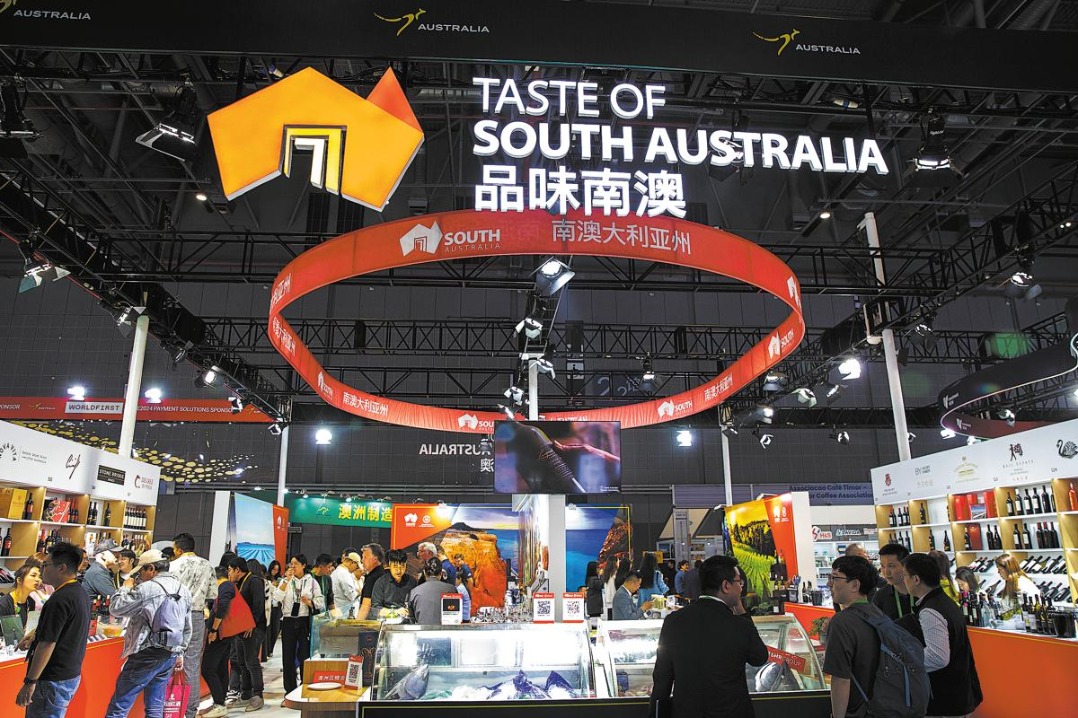Coal mining gas carbon credits aim to cut emissions


The Ministry of Ecology and Environment has unveiled two new carbon crediting methodologies for the China Certified Emission Reduction program, increasing the number of methodologies under the voluntary mechanism that allows participants to earn tradeable carbon credits to six.
The latest methodologies are for projects that utilize low-density coal mine gas and adopt energy-efficient streetlights in highway tunnels, according to a media release from the ministry in early January.
In October 2023, the ministry made public four CCER methodologies for afforestation, solar thermal power, offshore wind power and mangrove vegetation creation.
Under China's carbon trading mechanism, the world's largest, companies are allowed to purchase CCER credits to offset 5 percent of the emissions they need to buy allowances for. According to the ministry, 189 million metric tons of carbon dioxide emission allowances were traded in the country's carbon trading market last year for 18.1 billion yuan ($2.5 billion).
Jointly compiled by the ministry, the National Energy Administration and the National Mine Safety Administration, the CCER concerning coal mine gas aims to boost its utilization with methane concentration below 8 percent.
As the second most abundant global man-made greenhouse gas after carbon dioxide, methane has more than 80 times the warming power of CO2 during the first 20 years it reaches the atmosphere.
Liu Wenge, deputy head of the Ministry of Emergency Management's Information Institute, said the utilization of low-density coal mine gas is an effective way to reduce methane emissions and enhance safety production in the coal mining sector. He said it will also increase clean energy supply and promote the realization of the country's climate targets.
China aims to peak carbon dioxide emissions before 2030 and realize carbon neutrality before 2060.
Coal mining is a primary anthropogenic source of methane emissions in China, Liu was quoted as saying in a media release from the Ministry of Ecology and Environment. The sector contributed methane emissions equivalent to 530 million tons of carbon dioxide in 2018, representing 39.3 percent of the country's total methane emissions and 4.5 percent of its total greenhouse gas emissions.
Currently in China, coal mine gas with concentrations exceeding 8 percent has been well utilized for various purposes. While it can all be used for electricity generation, gas with concentrations surpassing 30 percent can also be utilized for both domestic and industrial applications, including producing compressed natural gas, according to Liu.
The expert emphasized that the utilization rate of coal mine gas in China remains low, primarily due to the inadequate consumption of low-density coal mine gas.
In 2020, 12.8 billion cubic meters of coal mine gas was extracted across the country, with only about 5.7 billion cubic meters, or less than 45 percent, utilized, he said.
Low-density coal mine gas exhibits a notably low utilization rate and accounts for a significant portion of the total. This aspect stands as a key factor necessitating the enhancement of coal mine gas utilization in China, Liu said.
The technology for utilizing coal mine gas with methane concentrations below 8 percent is still in the demonstration or industrial trial stage. "Related projects are still in the early stages of industrial development, with high investment costs and poor economic viability," he said, citing an unnamed project at a coal mine in Shanxi province that simultaneously generates both electric power and heat with low-density gas.
With a total investment of 110 million yuan, the heat-power cogeneration project can generate an annual revenue of 20.19 million yuan but its annual operating cost amounts to 10.8 million yuan, he said. This results in a return on investment of only 4.55 percent.
He highlighted the role of the CCER mechanism in incentivizing the utilization of the low-density coal mine gas, also citing the project as an example.
The project can result in an annual emission reduction of 180,000 tons of carbon dioxide equivalent, the price of which stands at 100 yuan per ton. By selling the carbon credits, the return on investment of the project can reach roughly 10 percent.
Zhu Liwei, a researcher at the Ministry of Transport's Research Institute of Highways, praised the introduction of the new carbon crediting methodology for energy-efficient streetlights in highway tunnels, noting that this initiative will help advance the sustainable operation of these tunnels.
His calculation based on publicly available data shows that around 10.67 billion kilowatt-hours of electricity is consumed to support the operation of highway tunnels across the country each year, with lighting accounting for approximately 60 to 80 percent of the consumption.
He mentioned that currently, fewer than 10 percent of tunnels nationwide are equipped with lighting systems that meet the criteria for implementing the CCER methodology, which entails the use of high-efficiency lighting fixtures and intelligent lighting control technologies.
"With the implementation of this methodology, there will be a positive incentive for tunnel owners, promoting the wider application of relevant technologies," he said.
Zhu said the methodology can potentially reduce carbon dioxide emissions by 200,000 tons per year at its current stage. By 2030, the emissions it could help reduce could increase to 800,000 tons.
houliqiang@chinadaily.com.cn
- Pairs of sister cities between China, Central Asian countries exceed 100
- Xi, Central Asian leaders witness inauguration of China-Central Asia cooperation centers, platform
- Xi, Central Asian leaders sign treaty of permanent good-neighborliness and friendly cooperation
- Discover China Program kicks off at BFSU
- Ministry launches job recruitment program in Qingdao
- Xi says China to set up new centers for cooperation with Central Asia





































